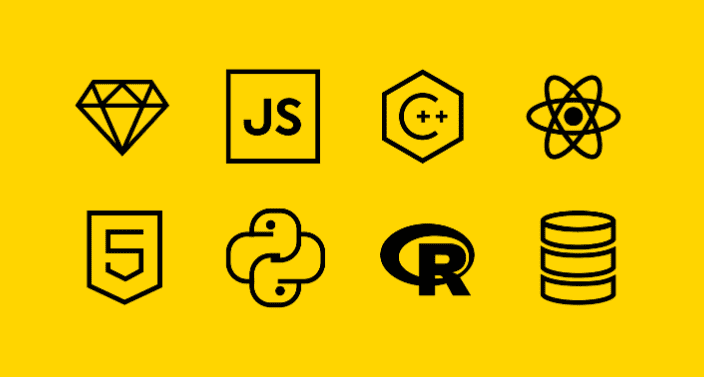Master JavaScript with hands-on beginner projects! Discover why it’s the go-to language for web developers, how to build skills with vanilla JavaScript, and explore 20+ open-source projects to kickstart your journey.
How Did JavaScript Get So Popular?

JavaScript is a flexible and powerful programming language that is implemented consistently by various web browsers.
Along with HTML and CSS, it’s a core component of web technology. While HTML is responsible for structure and CSS is responsible for style, JavaScript provides interactivity to web pages in the browser.
But JavaScript was never meant to become the cornerstone of modern web development. In fact, the language was created in less than two weeks, with a very different purpose in mind.
History of JavaScript
When the Internet boomed with public usage in the 1990s, technology companies battled to build the most powerful and efficient web browser on the market.
This sparked the first “browser war,” between Microsoft (Internet Explorer) and NetScape (NetScape Navigator) to gain dominance in the usage share of web browsers.

Netscape needed a lightweight scripting language for easier programming.
This ultimately made web development more accessible, unlike other languages that required deeper training. In 1995, a Netscape employee, Brendan Eich, there were ten days to help build the company a lightweight scripting language.
JS as a result, Eich built Mocha, later they gave the name .
The moral of the story— there was no intention to make JS become the standard language for the web!
However, after Netscape was acquired by AOL and eventually turned over their browser’s code to the Mozilla Foundation, the popularity of JavaScript grew much more day by day.
most popular web browsers are today using JS as an essential web technology.
Familiarity with the JS language is important for anyone who wants to become a web developer.
That is the reason why it is the most commonly used programming language in Stack Overflow’s Developer Survey for six years consequently.

JavaScript’s Popularity
At this point, you may be wondering: how is it that a language written in 10 days by one person became mass-adopted by the world wide web? In short, JavaScript became a hit because it turned web browsers into application platforms. Here’s how:
- both the front-end and back-end of web development uses JavaScript.
- JS is standardized, so it’s frequently updated with new versions.
- JavaScript works with the document object model, or the DOM, to respond to user interactions. The DOM is the structure in the browser that displays web pages.
- JS allows websites to have interactivity like scroll transitions and object movement. Modern browsers still compete to process JavaScript the fastest for the best user experiences. Chrome, the most used Internet browser in 2017, has been so successful in part because of its ability to process JavaScript quickly.
- JS offers a wide range of frameworks and libraries that help developers create complex applications with low overhead. Programmers can import libraries and frameworks in their code to augment their application’s functionality.

JS for Servers
In the early 2000s, big platforms like Facebook and Google began using JavaScript to program the back-end.
JS helped businesses scale since engineers who knew JavaScript could apply those skills in server-side contexts.
Server-side JS gained popularity because it allowed for the scalability needed in cloud computing and the back-end.
In the server, JS can be integrated with other languages to communicate with databases. Browsers have engines that can process JavaScript quickly, and this has encouraged more server-side usage.
Node.JS, or Node, is one of the most popular versions of server-side JavaScript. Node has been used to write large platforms for NASA, eBay and many others.
Since JS can execute programs out of order, Node can use it to create scalable web applications, messaging platforms, and multiplayer games.
This is why Google Cloud and Amazon Web Service depend on Node for some of their services.
What Else Can JavaScript Do?
Beyond the web, JavaScript has a large presence amongst cross-platform applications.
Popular standalone desktop apps like Slack, GitHub, Skype, and Tidal are developed with the JavaScript framework called Electron.js.
Electron is excellent for make desktop applications that need to work across different devices regardless of operating system.
In addition, JavaScript has the potential of expanding into other innovative technologies such as virtual reality and gaming.
JavaScript is excellent for animating, rendering, and scaling. JS even has contributed to the internet of things, the technology that makes simple objects, like your fridge, smarter.
Everyday devices can become interactive and collect data using JS libraries.

Conclusion
When diving into either programming or web development, JS is an excellent language to learn.
The capabilities of JavaScript allow you to use it in many different fields, from programming to web development.
Mastering what is known as “vanilla” or plain JavaScript will help you to tackle more complicated frameworks and libraries to make you a competitive developer.
So take some of our Codecademy JavaScript courses and become the JavaScript rockstar companies are looking for!





